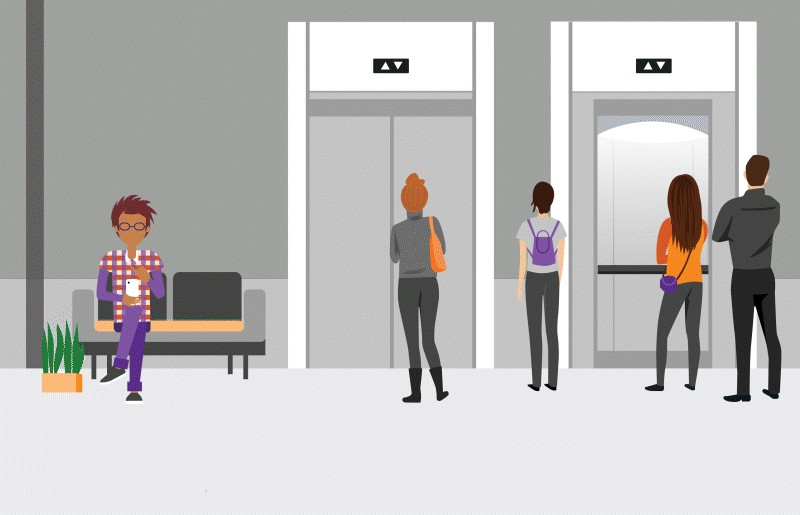How Intelligent Dispatching Improves the Flow of People in a Building
After entering an office building, heading straight for the elevator is almost second nature for workers. There’s no need to think twice about stepping into the elevator cab because it’s a trustworthy example of engineering. Elevators have made it possible for us to reach new heights. In the present, we have the remarkable opportunity to consider it mundane when we climb monumental heights and look out from the top of skyscrapers. Just as we have evolved to view elevators as common transportation, elevators are constantly evolving to meet our needs.
The TKE Index Report is a transparent report full of data taken straight from 86,000 elevators across the U.S. and Canada to help us better predict trends for our elevators in workspaces. There were five major trends taken from this report which include smart building technology, touchless technology adoption, and intelligent dispatching.
Intelligent Dispatching and the Future of Elevator Innovation
The future of advanced elevator technology and innovation is here, and intelligent dispatching is a tool that’s at the forefront of it all. Not only can intelligent dispatching provide necessary health benefits by limiting interactions in tight spaces, but it can shorten the length of time that tenants wait in the lobby for an elevator. This will improve foot traffic and make for a positive flow of people throughout their buildings.
How long does it take your elevator car to arrive after you have called it? Whether it feels like eons or mere seconds, speed and efficiency can always be improved upon. We strive to do this, and the TKE Index Report has given us insight into different ways that this can be possible as demonstrated in the trends that we found.
The cumulative amount of time that people across the U.S. wasted time waiting for an elevator over the course of a year totaled 59 years.

What if we are closer than we think to a world in which we don’t wait for elevators as long as we have in the past? Our TKE Index Report has shown a significant increase of workers returning to their office and utilizing elevators far more than last year. We are reaching numbers that are moving towards our 2019 pre-COVID baseline. This means that we must be more aware of the way buildings are managed and foot traffic is flowing in a pandemic-era society.
But what exactly is intelligent dispatching and how can it improve a building?
Intelligent dispatching is a type of modernization and system that can be utilized to direct passengers and tenants to a specific elevator car which will carry them to their intended destination in the shortest travel time possible.
The intelligent dispatching system will group passengers together in an elevator based on their floor destination and send them to that specific elevator.

Instead of simply pressing an “up or down” button to call an elevator, tenants will now have the ability to inform the elevator of which floor they want to arrive at while calling it to their floor. This will result in less crowding, lower wait times and fewer stops along the way.
While the widespread implementation of intelligent dispatching technology seems like a long way away, many buildings have already installed these systems and have seen the benefits. Smart dispatching systems like AGILE are making tomorrow better for office workers everywhere by providing them with elevators to their exact floor with only one touch of a button.
The 59 years that are wasted waiting for an elevator every year can be easily reduced if systems like AGILE are established into buildings. The TKE Index report highlights intelligent dispatching and provides data illustrating elevator activity in North America.
Would you like to learn more about the TKE Index Report? Have a copy emailed to you
 United States
United States

